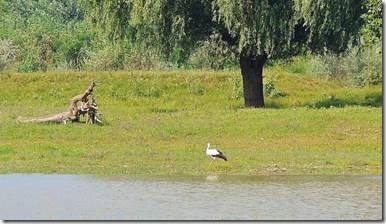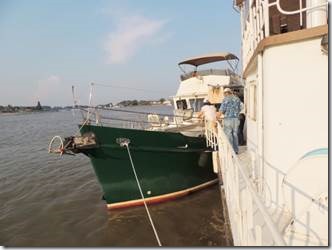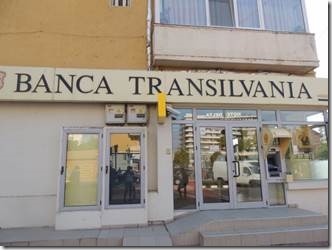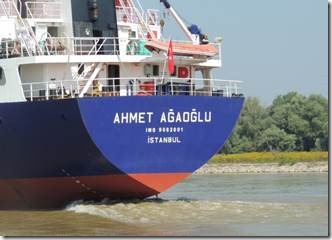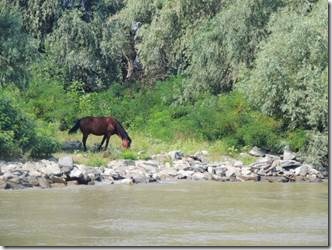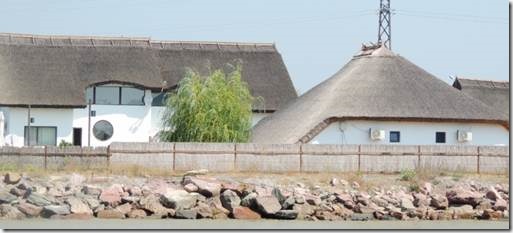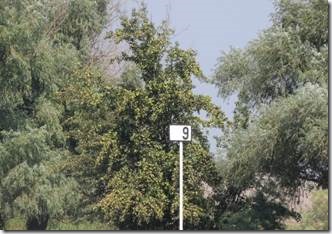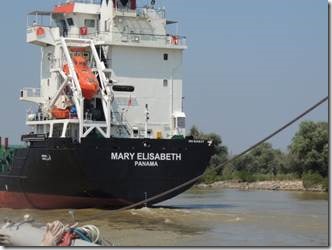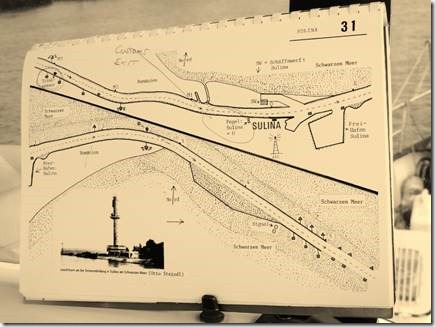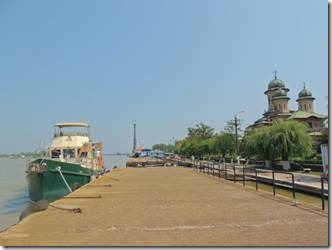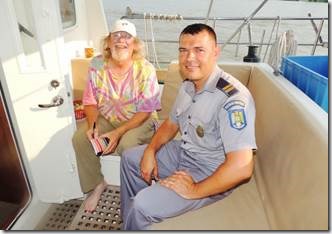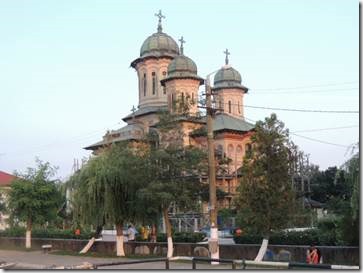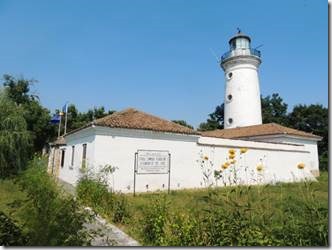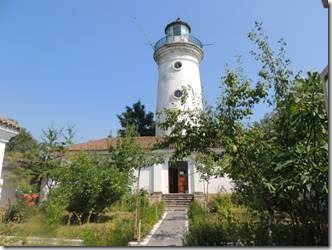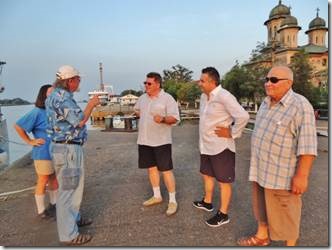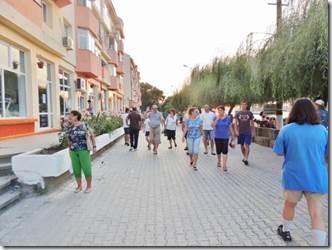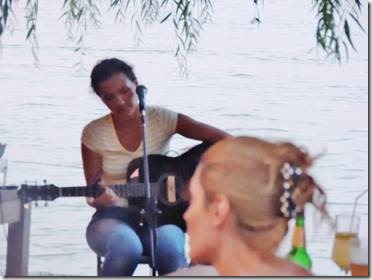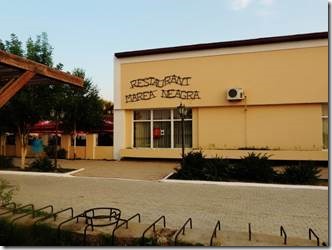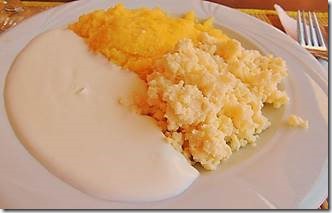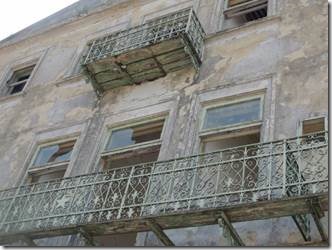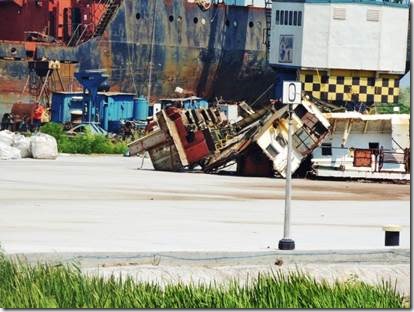August 22, 2014
Varna, Bulgaria (again)
Здравей zdraveĭ
We checked back into Bulgaria and will have one more stop at Sozopol before we check out and head back towards Turkey probably stopping in Greece first. Not sure yet exactly what the plan will be.
I am definitely ready to be done and my enthusiasm is flagging to tour each place we visit. I really did enjoy or stop in Port Tomis, Constanta and wish we had more time. But we really do have to get going if we’re to get back to Turkey, find a place to get DoraMac repainted and totally spiffed up ready for whomever becomes her next owner AND fly home to the US hopefully by mid-September. But maybe I’ve wet some appetites about visiting Eastern Europe with its charming cities and towns and warm, friendly people.
Ru
Tulcea
“The largest town of the Delta with a population of 91,000, lies just before the last fork in the Danube at km 71 on the site of the ancient Roman settlement of Aegissus, built in turn on a Dacian city founded in the 7th century BC. It is a significant port and industrial centre, with no particular charm, but the harbour bustles with luxury boats taking visitors on trips into the delta.
In town, you can get a good overview of the many varieties of local flora and fauna in the Danube Delta Museum, along with displays illustrating the traditional life of delta fishermen. There are also museums of history and archaeology, folk art and ethnography, as well as an art gallery.” JPM Danube Guide.
Sulina
“Downstream from Tulcea, passenger boats ply back and forth incessantly between fishing craft and rusting cargoes along the Sulina branch. The channel was deepened back in the 19th century to permit the passage of bigger ships, and the winding 92 kilometer stretch of the river was turned into a 64 km canal with a navigable channel 150 m wide and at least 7.50 m deep. Merchandise and passengers are unloaded at regular intervals outside the little villages scattered along the banks.
…port of Sulina, where the Danube flows into the Black Sea. You can see the 0-km maker near the old lighthouse. Already a settlement in Byzantine times, Sulina was later a mooring point for Genoese ships. Since the 19th century this former fishing village has developed shipyards and a fish-processing industry (no longer there.) Here the work of the river is highlighted: by depositing 80 million tons of silt and gaining 40 m fron the sea each year, it has moved the lighthouse from the shore to the middle of the marketplace! From here the Black Sea seems just a stone’s throw away, even if the ships still have to journey another 12 km through a canal bordered by quays in order to reach the open sea.”
JPM Danube Guide 2013 edition.
I’m afraid we spent our time in Tulcea going to the ATM, buying sim cards for our dongles, going to the outdoor market for some tomatoes, peaches, and cucumbers, and the next day to the grocery store. Not a very exciting time in Tulcea, though for the guide to say “it has no particular charm” is a bit unfair. It wasn’t instantly obviously charming, but if you explore the small places and neighborhoods, you can usually find something or someone to bring a place to life. While having an “arrival drink” at the Republica Restaurant where we tied up DoraMac, we met a young man traveling with a folk group. We chatted for a bit. Days later while walking through the old town here in Port Tomis, we met him again and learned about his travels as a folk music musician. You’ll meet him when I write about Port Tomis.
We did spend a bit more time exploring Sulina where we were tied up on the waterfront promenade of small shops and restaurants. Three years ago when Rick and Mary did their first river trip, the waterfront was one dusty road with not much on it.
The article below tells what Tulcea was like before communism and I think it’s pretty accurate for many of the places that we visited.
Augustin IOAN
A Space of Forbearance
– Ethnicity and Architecture in a small Romanian town –
Augustin IOAN : Romanian Native Collaborates with UC Professor
http://www.uc.edu/alumni/spotlight/augustin-ioan.html a Fulbright Senior Scholar and the recipient of a Getty Grant
|
It was hard to photograph the birds as we weren’t so close to shore and I was busy catching up with the photos from earlier stops. But here is a photo of a stork I did manage to catch. Thankfully Delta tourism seems popular as a way to safeguard the wildlife in the area rather than draining the place as we did in Florida. An eco-tourism industry has developed taking tourists into the Danube inlets to see the flora and fauna and visiting the small towns. We were much too big to go those places and taking a “boat tour” at that point wasn’t in the cards. https://romaniadacia.wordpress.com/tag/danube-delta/ shows more and tells more about the Delta area with lovely photos of the land, birds and people. Really worth a look. |
|
Tied up at the Republica Restaurant which was another test of gymnastic abilities getting off and onto the boat. |
|
There really is a Transilvania in Romania. Thankfully Randal’s card did work here. |
|
Big boats come along up the Danube here, this one from our destination, Istanbul. |
|
We left Tulcea early for Sulina. Along the way we’ve seen lots of horses, all looking well fed; at least from a distance. |
|
First single digit marker. |
|
The last of the Danube charts we’ve been following. |
|
Tied up along the waterfront promenade near St Nikolas Church. |
|
Randal and “Christi” the Sulina port police. He explained the port rules but also taught us about Romanian food which we tried the next day for lunch. |
|
Romanian Orthodox not open when we were there. “The cathedral was built between 1919-12 and 1933-34. It was built to commemorate the return of Dobrudja to Romania in 1878. The dome was a target in World War II and the church sustained heavy damage. Repairs began in 1969, furthered in 1975, and finally completed in 1982. https://www.stnicholascenter.org/galleries/gazetteer/4079/ In the late 19th century, Sulina, although modest in size, was one of the most prosperous towns in Romania, thanks to the activities of the European Danube Commission. Numerous edifices and monuments (presented below), which have survived to the present day, although now in an advanced state of decay, complete the image of a once flourishing and cosmopolitan port. 1.The Orthodox Cathedral of Saint Nicholas was built in a number of stages, between 1910-12 and 1933-34. Its foundations were laid by King Carol I himself, on the occasion of his visit to Sulina in 1910, to commemorate the historic act whereby Dobrudja was returned to Romania in 1878. The church is remarkable for the harmony of the whole, the unity of its Neo-Romanian forms, and its picturesque details. In its architectural design, the central band of cable moulding and the mosaic medallions are particularly worthy of note. The fact that most of the places of worship in Sulina are dedicated to St Nicholas is because most of its inhabitants are mariners or fishermen, who honour this particular saint as their patron. |
|
1856 (Ottoman). Inactive at least since 1983. 16 m (59 ft) round stone tower with lantern and gallery, attached to a 1-story masonry keeper’s house. Lighthouse painted white. A 1st order Fresnel lens is mounted in the lantern. …The Sulina Branch of the Danube is the only mouth navigable by modern ships. Sedimentation has moved the entrance to the river considerably to the east, leaving this historic lighthouse high and dry. Located on the south bank of the river in the town of Sulina. Site open, tower open daily for climbing. ARLHS ROM-019. |
|
“We’ve been waiting for you since 1945,” were the words spoken by the man on the far left. He had his heart set on owning a Camaro one day. He was with his wife’s brother and father. |
|
In the cooler evenings shops opened and folks came out to stroll. |
|
We managed to walk past the restaurant we were aiming for so ended up at the last one on the promenade. The fish soup was only okay (not nearly as good as Martha’s) and probably not really intended as a meal. But it was late so I didn’t want anything heavy. But the singer was really good. She sang many songs in English and sounded a bit to me lik Joan Baez. She was sitting at the edge of the restaurant in the dark so my photo is a bit odd. |
|
“Christi” recommended this place and one of the dishes he suggested was mamaliga Mamaliga, goat cheese and cream : The photo is bland but the food wasn’t. (Ma ma lee ga ) is very similar to polenta. This goat cheese was very salty as is most goat cheese I’ve had away from home. Mixed together it was very good but more than I could eat. “Romania isn’t best known for its food but it will be….I know. There is an incredibly rich culinary tradition here, homegrown in Romania, born out of the necessities of life, brought in by the Ottomans, Germans, Russians, Serbians, Hungarians…. Add to that a generous climate, fertile soil and the Black See that provide fabulous ingredients in abundance and you are ready to feast. To understand Romania and to understand mămăliga, you have to understand traditional Romanian culture. Historically, Romanians ate this golden bread (mămăliga – made from cornmeal) as a replacement to bread. It is inexpensive, easy to do every day, in every season and could be found in every house. Mămăliga is similar to a porridge made out of wheat of cornmeal traditional for Romania. It is better known to the rest of the world in its Italian form named polenta. Traditionally, mămăliga is cooked by boiling water, salt and cornmeal in a special-shaped cast iron pot called ”ceaun” or ”tuci”. Mămăliga is much thicker than the regular Italian polenta to the point that it can be cut in slices with a string, like bread. Sometimes, mămăliga can be much softer, almost to the consistency of porridge. Mămăliga is a fat-free, cholesterol-free, high-fiber food. It can be used as a healthy alternative to more refined carbohydrates such as white bread, white pasta or white rice. In Romania, mămăliga is used as a bread substitute and can be served all day: -with sour cream and jam for breakfast, -stuffed with cheese and served with pickles as a all day meal – used as the starchy base for meaty stews, grills, Sarmale recipe here….(Mamaliga and Wild Boar Stew)…etc, at dinner. ) |
|
Some buildings along the promenade had been lovely once upon a time, but now needed lots of rennovation. |
|
The Danube: Kilometer 2412 back in Kelheim, Germany to 0 at Sulina, Romania |
From Sulina we did a night passage in the Black Sea to Constanta, our final stop in Romania. There we did do a bit of exploring.

